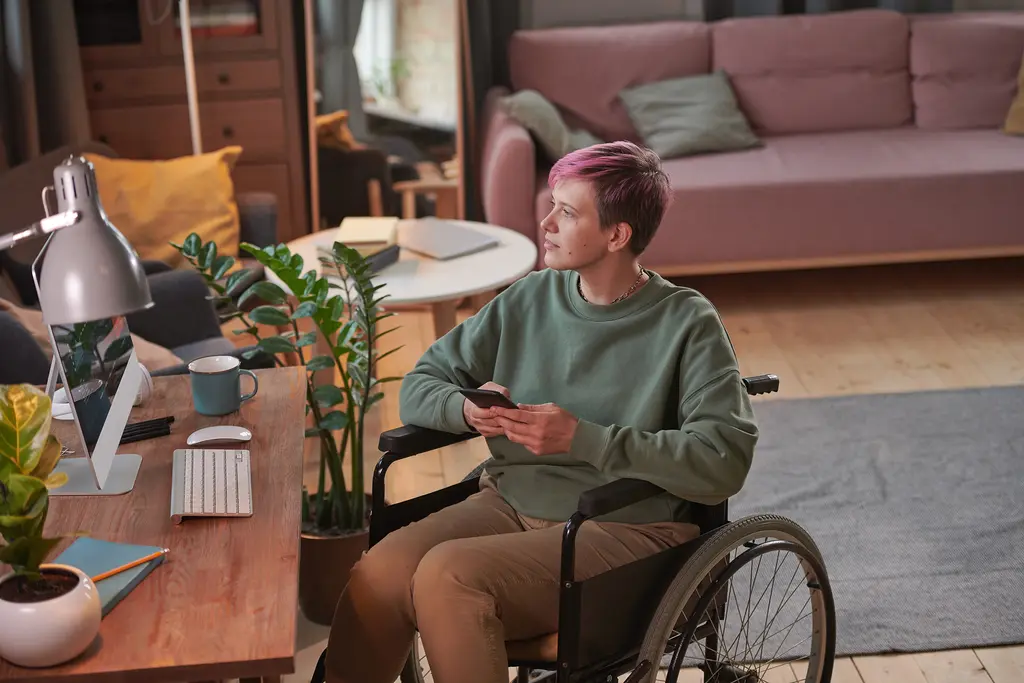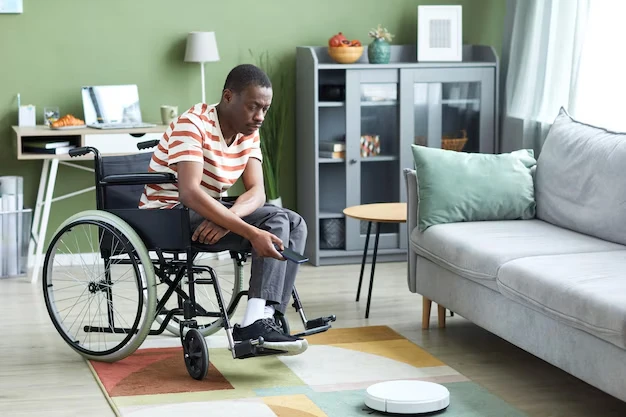In modern home design, integrating quality home access solutions is crucial for accommodating diverse mobility needs. Exploring ‘Sporty Living Spaces: Elevating Home Access Solutions for Quality Mobility’ reveals innovative approaches reshaping how we interact with our living spaces.
By blending advanced design concepts with reimagined accessibility norms, a new era of dynamic, inclusive home environments emerges. Let’s delve into this evolving realm where practicality meets elegance to redefine home accessibility.
Key Takeaways
- Narrow doorways and steep staircases are challenges hindering home accessibility
- Quality home access solutions empower individuals with diverse mobility needs
- Innovative solutions like smart home technology and universal design principles enhance accessibility
- Sporty living spaces can combine dynamic design elements with functional accessibility solutions
Challenges in Home Accessibility
Navigating through daily life can present a myriad of challenges for individuals seeking quality home access solutions. When it comes to home accessibility, various hurdles can impede one’s ability to move freely and independently within their living space. Common challenges include narrow doorways that restrict wheelchair access, steep staircases that pose a risk for those with mobility issues, and inadequate bathroom facilities that may not accommodate individuals with disabilities. These obstacles can create feelings of frustration, isolation, and dependency, impacting both physical and mental well-being.
Moreover, outdated infrastructure and lack of proper accommodations can further exacerbate these challenges, making it essential to address home accessibility issues promptly and effectively. By acknowledging and understanding the barriers individuals face in their daily lives, we can work towards implementing tailored home access solutions that promote inclusivity and autonomy. Through thoughtful design modifications, assistive devices, and technological advancements, we can create living spaces that cater to diverse needs and enhance overall quality of life for all residents.
Importance of Quality Home Access
Ensuring quality home access is not just a matter of convenience, but a fundamental aspect of fostering independence and well-being for individuals with diverse mobility needs. Quality home access solutions play a crucial role in empowering individuals to navigate their living spaces with ease and confidence, promoting a sense of autonomy and dignity. For those with mobility challenges, a well-designed home environment can significantly enhance their quality of life by providing them with the freedom to move around independently and engage in daily activities without unnecessary barriers or limitations.
Moreover, best home access solutions contribute to creating inclusive and welcoming living spaces that cater to the diverse needs of all occupants. By prioritizing accessibility in home design, individuals with mobility limitations can feel a sense of belonging and integration within their living environment, fostering a supportive and inclusive atmosphere for all residents. Ultimately, investing in quality home access solutions not only enhances physical mobility but also promotes emotional well-being and a sense of belonging for individuals with diverse mobility needs.

Enhancing Mobility at Home
To optimize daily living for individuals with diverse mobility needs, it is essential to focus on enhancing accessibility and mobility within the home environment. Creating a living space that caters to different mobility requirements not only promotes independence but also ensures a sense of inclusivity and comfort for all residents.
One key aspect of enhancing mobility at home is the installation of ramps and elevators to facilitate movement between different levels of the house. These modifications not only benefit individuals using wheelchairs or walkers but also provide convenience for all family members and visitors.
Moreover, incorporating wider doorways and hallways allows for easier navigation throughout the home, accommodating mobility aids and promoting a seamless flow between rooms. Non-slip flooring and grab bars in critical areas such as bathrooms and kitchens enhance safety and stability, reducing the risk of falls and accidents.
Additionally, adjustable countertops and shelves ensure that essential items are within reach for everyone, regardless of their mobility limitations. By prioritizing accessibility and mobility enhancements in the home, individuals can enjoy a more inclusive and supportive living environment that promotes overall well-being and quality of life.
Innovative Solutions for Accessible Living
As we continue to explore enhancing mobility at home through thoughtful design modifications, the focus now shifts towards innovative solutions for accessible living that further elevate the quality of home access solutions. In striving to create living spaces that cater to diverse needs and abilities, the following innovative solutions stand out:
- Smart Home Technology Integration: Incorporating voice-activated controls, automated lighting, and smart thermostats can significantly enhance accessibility for individuals with mobility challenges.
- Modular Furniture Design: Adaptable and customizable furniture pieces allow for easy reconfiguration to accommodate different mobility aids and preferences.
- Universal Design Principles: Implementing universal design features such as wider doorways, lever-style door handles, and non-slip flooring ensures a more inclusive living environment for all residents.
- Multi-functional Spaces: Designing multi-functional areas that can serve various purposes helps maximize space utilization while promoting ease of movement and accessibility throughout the home.
Creating Sporty Living Spaces
In crafting sporty living spaces, the fusion of dynamic design elements with functional accessibility solutions creates an environment that not only supports mobility but also inspires an active lifestyle. By incorporating elements like adjustable countertops for varying heights, wide doorways for easy movement, and non-slip flooring for safety, individuals can seamlessly transition from daily tasks to engaging in their favorite physical activities within the comfort of their homes.
Furthermore, the integration of smart technology, such as voice-activated controls for lighting and temperature adjustments, enhances the convenience and modernity of these spaces. Storage solutions that cater to sports equipment like bicycles, yoga mats, or weights ensure that belongings are organized and easily accessible for impromptu workouts or planned exercise routines.
Creating sporty living spaces goes beyond just functionality; it fosters a sense of belonging and empowerment for individuals who value an active lifestyle. These spaces not only promote physical well-being but also serve as a constant reminder of the importance of staying active and healthy in one’s own home environment.
Elevating Home Access Design
Elevating the design of home access goes beyond crafting sporty living spaces; it involves enhancing the functionality and inclusivity of residential environments to ensure seamless mobility and comfort for individuals seeking a dynamic and accessible lifestyle.
Four Ways to Elevate Home Access Design:
- Universal Design Principles: Implementing universal design features such as wider doorways, lever-style handles, and no-step entries can create a more inclusive environment for individuals of all abilities.
- Smart Home Technology Integration: Incorporating smart home technology like voice-activated controls, automated lighting, and remote-controlled appliances can significantly improve accessibility and convenience within the home.
- Multi-level Accessibility Solutions: Installing ramps, stairlifts, or elevators can facilitate movement between different levels of the home, allowing for easy access to all areas without restrictions.
- Adaptive Furniture and Fixtures: Utilizing adjustable-height countertops, grab bars in bathrooms, and ergonomic furniture can enhance comfort and usability, catering to diverse mobility needs while maintaining a stylish and practical living space.
Frequently Asked Questions
What Are Some Common Misconceptions About Home Accessibility Solutions?
Common misconceptions about home accessibility solutions include limited options, high costs, and lack of aesthetics. In reality, there are diverse solutions at various price points, blending functionality with style to enhance mobility and independence.
How Do Quality Home Access Solutions Impact Overall Quality of Life?
Quality home access solutions significantly enhance overall quality of life by fostering independence, safety, and convenience for individuals with mobility challenges. These solutions promote a sense of empowerment and well-being, improving daily functionality and comfort.
What Are Some Unique Ways to Incorporate Sporty Elements Into Home Access Design?
Incorporating sporty elements into home access design can be achieved through features like ramps with sleek designs resembling sports tracks, vibrant color schemes, and ergonomic handrails for a dynamic and functional living space.
How Can Technology Be Integrated Into Home Access Solutions for Enhanced Mobility?
Technology can enhance home access solutions by providing smart features like automated ramps or door openers, sensor-based lighting, and remote control systems. These advancements improve mobility, convenience, and independence for individuals with diverse needs.
What Are Some Key Factors to Consider When Designing a Home for Optimal Accessibility and Mobility?
When designing a home for optimal accessibility and mobility, key factors to consider include incorporating wide doorways, level thresholds, grab bars, non-slip flooring, and adjustable countertops. Prioritizing these features ensures a safe and functional living space for all residents.
Conclusion
In conclusion, the evolution of home access solutions is crucial for creating inclusive and dynamic living spaces that cater to diverse mobility needs. By incorporating cutting-edge technologies and thoughtful design elements, homeowners can elevate accessibility without compromising on style.
The importance of quality home access cannot be overstated, as it plays a significant role in enhancing the overall quality of life for individuals with mobility challenges. Embracing innovative solutions and creating sporty living spaces can truly transform homes into havens of comfort and convenience.
You may also like to read:
How Does Advanced Network Design Amplify Sports Broadcast Quality?

